Forde Minutes: Kentucky, Indiana and USC Men’s Basketball Teams Face Crisis Points

- Kentucky Wildcats
- USC Trojans
- UCLA Bruins
- Indiana Hoosiers
- Maryland Terrapins
- Ohio State Buckeyes
- Miami (FL) Hurricanes
- Texas Longhorns
- Villanova Wildcats
- Gonzaga Bulldogs
- Texas A&M Aggies
- Florida Gators
- Michigan State Spartans
- UNLV Runnin' Rebels
- Cincinnati Bearcats
- Memphis Tigers
- Wake Forest Demon Deacons
- Ole Miss Rebels
- Nevada Wolf Pack
- Yale Bulldogs
- Saint Mary's Gaels
- Cornell Big Red
Forty names, games, teams and minutiae making news in college basketball, where 3–20 DePaul is heading toward a Valentine’s Day massacre hosting 22–2 UConn on Wednesday:
Crisis points
February fades, bad starts—for a variety of reasons the season hasn’t gone as expected for these teams. Can they rectify that in the final month of the regular season?
Kentucky Wildcats (1). A significant segment of Big Blue Nation is suffering from Cal fatigue, and recent events have swelled the ranks of the disgruntled. After three straight disappointing seasons, the Wildcats (16–7) now have deflated high hopes for the current team by losing three straight home games for the first time since December 1966—a decade before Rupp Arena even opened, and Adolph Rupp himself was still the coach. Kentucky has done its part to get two bubble teams (the Florida Gators and Gonzaga Bulldogs) into the bracket with wins in Rupp and also surrendered 103 points to the Tennessee Volunteers.
Since John Calipari (2) won his only national championship in 2012 and last visited the Final Four in ’15, returns on a massive coaching investment have diminished. The Wildcats haven’t won the Southeastern Conference since ’20 and haven’t won the SEC tournament since ’18. Now this team is threatening to turn a promising season sour.
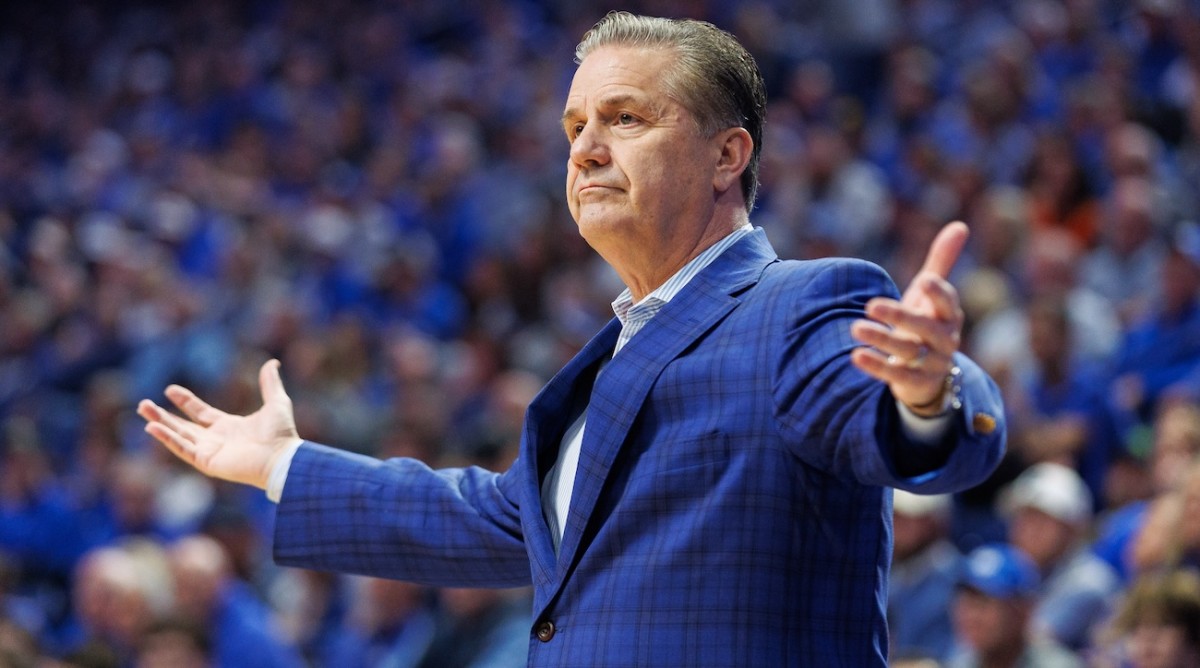
Two things have been constant for Kentucky in the Cal Era: huge amounts of talent and questionable Xs-and-Os acumen—the latter especially lately. Calipari is outcoached more often than a guy making $9 million a year should be. Whether it’s game planning or in-game strategy, the Cats don’t often have an edge on the bench. (Maybe that is in part attributable to staff makeup.)
The loss to Gonzaga on Saturday was a painfully clear illustration. A Zags staffer pointed out on X (formerly Twitter) how futile Kentucky was trying to defend a standard middle ball-screen action.
Gonzaga ran the same middle ball screen concept basically every single half court possession the final 12 minutes of the game yesterday and Kentucky had zero answers.
— Steven Karr (@SKarrG0) February 11, 2024
(One more Ike bucket isn't on here because the TV director cut to a fan shot mid-play) pic.twitter.com/9vyvIxHFHi
Gonzaga simply kept running it because Kentucky simply couldn’t stop it. The Wildcats were sufficiently soft and hesitant that there was both no pressure on the Bulldogs’ ballhandlers and no denial of the big men as they rolled into the paint to post up—the worst of both defensive worlds.
Calipari’s inability to either recognize or counterprogram what Mark Few was running over and over was glaring. He’s got a bad defensive team (No. 124 nationally, per Ken Pomeroy) and seemingly can’t fix it. Kentucky’s three—yes, three—7-footers are young, and they aren’t getting better defensively. They can block shots—UK is second nationally in block rate—but more often, they’re surrendering inside baskets and putbacks.
It does not help that the UK guards are underwhelming in terms of keeping drivers out of the paint. Reed Sheppard is a great freshman with remarkable hands—his 2.4 steals per game lead the SEC—but he isn’t a great ball stopper. Fellow freshman Rob Dillingham is worse.
In fairness, Kentucky has had at least one significant rotation player out for every game since the struggle began a month ago. The Cats are 4–5 in their last nine with Dillingham, D.J. Wagner Jr., Adou Thiero, Justin Edwards and Tre Mitchell missing time at various points. But this is a team that, in theory at least, goes 11 deep. It is a stretch to consider Kentucky shorthanded when one of those 11 is out.
A team this talented could put it together quickly at just the right time. Calipari has done that before at Kentucky—there were memorable Final Four runs in 2011 and ’14. But that’s a long time ago now. Does the $9 Million Man still have the magic or will Cal fatigue deepen?
Indiana Hoosiers (3). Incremental improvement in the first two seasons under Mike Woodson (4) has U-turned sharply in year three. With Trayce Jackson-Davis—the No. 3 scorer and No. 1 rebounder in school history—Woodson at least got the Hoosiers to the NCAA tournament twice and advanced to the round of 32 once. Without him, this 14–10 team isn’t going to make the Big Dance unless it goes on a startling run.
Indiana hasn’t won consecutive games in 2024, hasn’t been competitive against archrival Purdue (two losses by a combined 41 points) and hasn’t beaten a single power-conference opponent currently projected to make the tournament. The résumé is threadbare, even if the roster isn’t.
Woodson landed five-star freshman MacKenzie Mgbako after he decommitted from the Duke Blue Devils. He brought in former five-star center Kel’el Ware as a transfer from the Oregon Ducks. He retained starting guard Trey Galloway and valuable backup Malik Reneau. And it hasn’t worked.
Here in the three-point era, Indiana is a throwback—and not in a good way. The Hoosiers rank 349th nationally in percentage of shots taken from three, which actually is a wise allocation given the lack of accuracy (32.8%, 224th in the nation). Indiana also shoots poorly from the line, is turnover-prone and doesn’t offensively rebound well.
Some IU fans are dreaming of former Bob Knight manager Dusty May (5) leaving the Florida Atlantic Owls program he’s built from scratch, but it would be a surprise to many if the school forces out a native son and former IU great like Woodson after three seasons. Indiana hasn’t changed men’s basketball coaches in three seasons or fewer due to on-court performance in at least a century.
Then again, if the specter of losing May to another school arises, it might spur drastic action. Stay tuned.
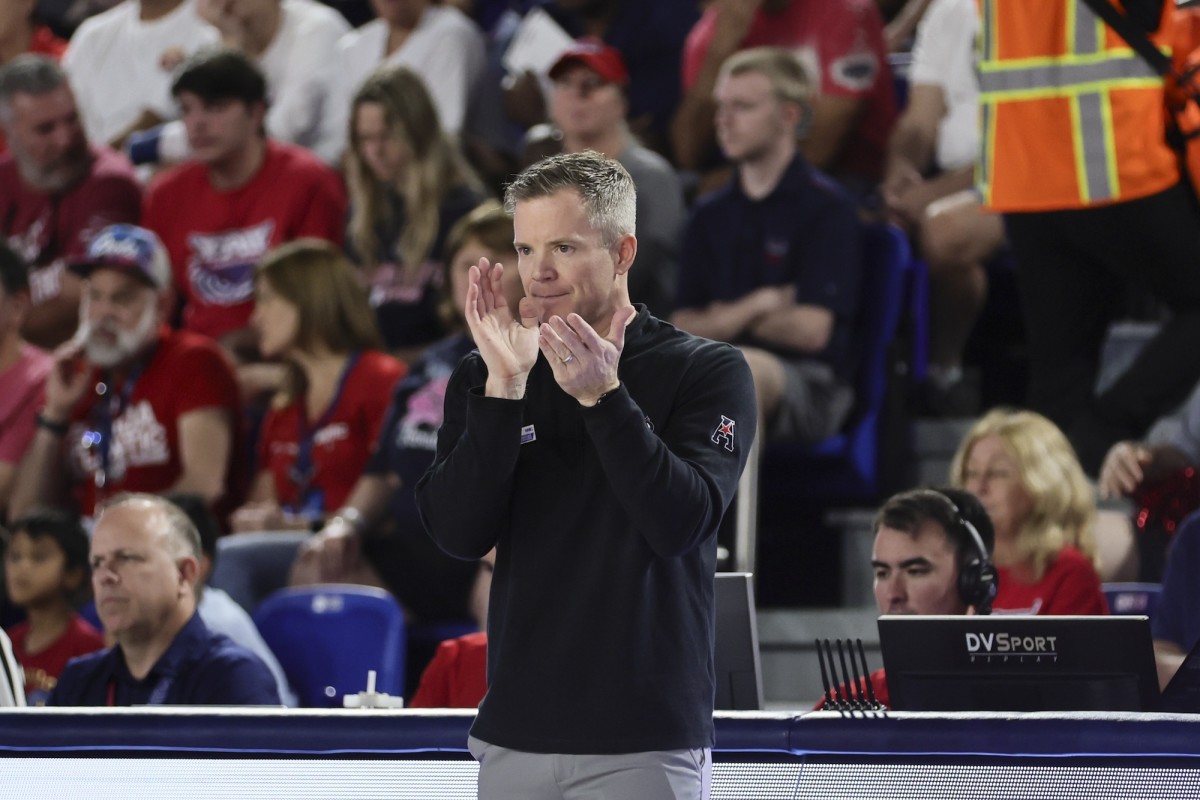
USC Trojans (6). There appears to be no salvaging this disaster. The Trojans started the season No. 21 in the AP poll and currently are tied for last in the Pac-12 at 9–15 overall, 3–10 in league play. After signing the No. 3 recruiting class in the nation, behind Kentucky and Duke, and returning leading scorer Boogie Ellis, USC has achieved nothing.
The Trojans bottomed out Saturday night at the Stanford Cardinal, giving up a 25–0 run in the first half and losing by 31 to a team that is 12–11. They’ve lost eight of their last nine, and after that non-effort in Palo Alto, Calif., it’s fair to wonder whether coach Andy Enfield (7) has lost the locker room as well.
The roster has been in flux all season, with only one player appearing in all 24 games. Bronny James (8) certainly shouldn’t be judged based on a freshman season that was preceded by cardiac arrest in June—he missed the first eight games and didn’t enter the starting lineup until mid-January. That said, his game has never matched the fame associated with his name. The spotlight was thrust upon him more than it was earned.
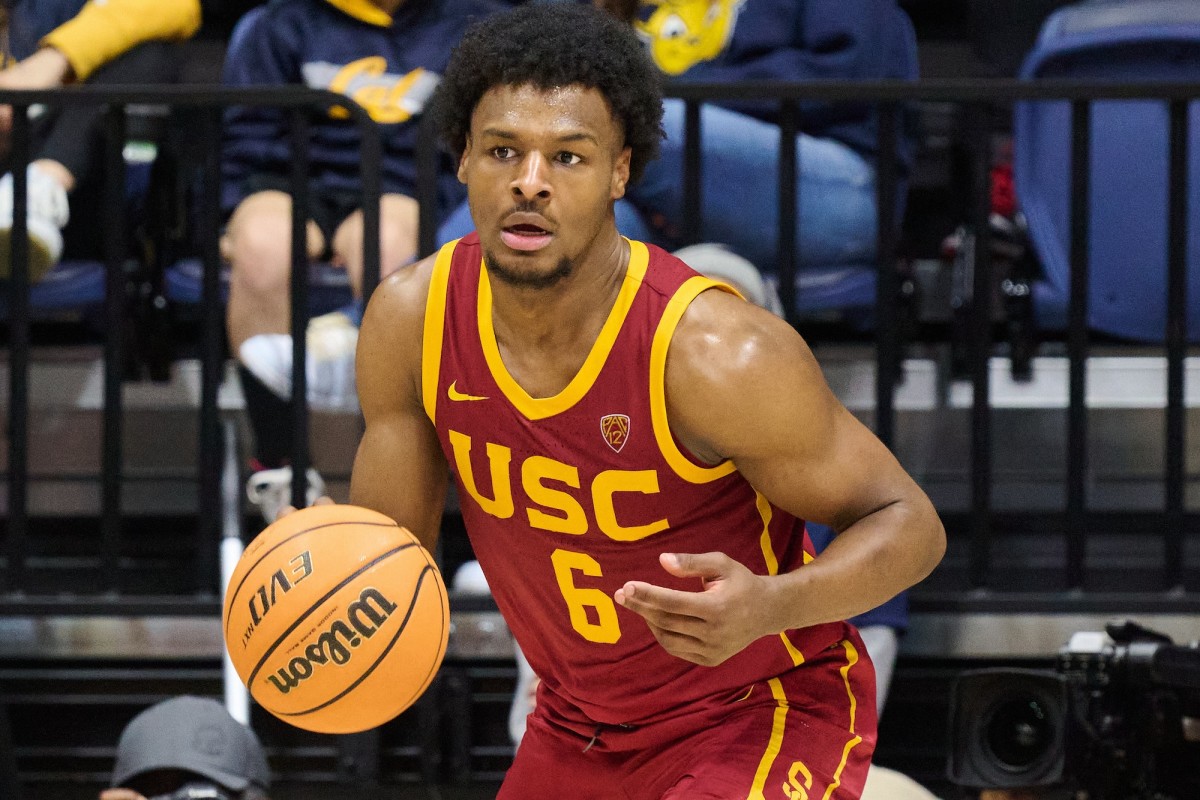
Fellow freshman guard Isaiah Collier (9), the more ready-made star and No. 2 overall recruit in the class, missed six games. He’s compiled good numbers when in the lineup, but hasn’t drastically altered the team’s trajectory (8–10 with Collier, 1–5 without him).
Including this season, Enfield has missed as many NCAA tourneys as he’s made (five) at USC. That may be perfectly acceptable at an apathetic basketball school. But there’s no telling what the roster will look like heading into a tougher league with tougher travel next season.
UCLA Bruins (10). Here is one place where the season is trending better, not worse. But wow, what a brutal start. Mick Cronin (11) overscheduled December with a young team and the result was 10 losses in the first 16 games, including one clunker against Cal State Northridge. Currently, the Bruins are on a five-game winning streak and have won seven of the last eight, losing only at Arizona. Five of the final seven are at home as well.
But with a No. 112 NCAA NET rating, the mission is clear: win the Pac-12 tournament or there will be no NCAA bid. UCLA is 13–11 overall, 0–6 in Quad 1 games and 1–3 in Quad 3. Yikes.
Cronin’s crew cannot shoot and struggles to create good shots. Tough combination. UCLA is 327th in effective field goal percentage, with only three power-conference teams below it (the Vanderbilt Commodores, Texas A&M Aggies and Rutgers Scarlet Knights). The Bruins also are even in assists and turnovers at 277, which is not an ideal ratio.
Cronin has won at least 22 games in 12 of his last 13 seasons as a head coach, but it will be a tough task getting there this year. The Louisville Cardinals (12) job is all but certain to open, and some would love to see the former Rick Pitino assistant there. Cronin talks often about how much he likes being the UCLA coach, but life after Jaime Jaquez Jr. and Tyger Campbell hasn’t been rosy—and a move to the Big Ten looms. Would he join Chip Kelly in making a jump?
Maryland Terrapins (13). They were projected to finish third in the Big Ten. They’re currently 12th at 5–8, 13–11 overall. Kevin Willard was expected to build on a surprisingly good debut season in College Park, but instead it’s gone the other way, a regression to the middle of 2020–21 and ’21–22. (Though they did win at the aforementioned UCLA in December, in a fellowship of the miserable showdown.)
Maryland is trying, but it isn’t executing in close games. The Terps are 2–5 in Big Ten games decided by one score or that went into overtime. Missed foul shots doomed them in a double-overtime loss to the Ohio State Buckeyes on Saturday.
Maryland is nearly as bad as UCLA when it comes to getting buckets, ranking 314th in effective field goal percentage. Guard Jahmir Young (14) is the only Terp shooting better than 35% from three and the only one who has made 40 or more threes. And when they’re not missing shots, the Terps are turning it over—they’re last in the Big Ten in turnover rate in league games.
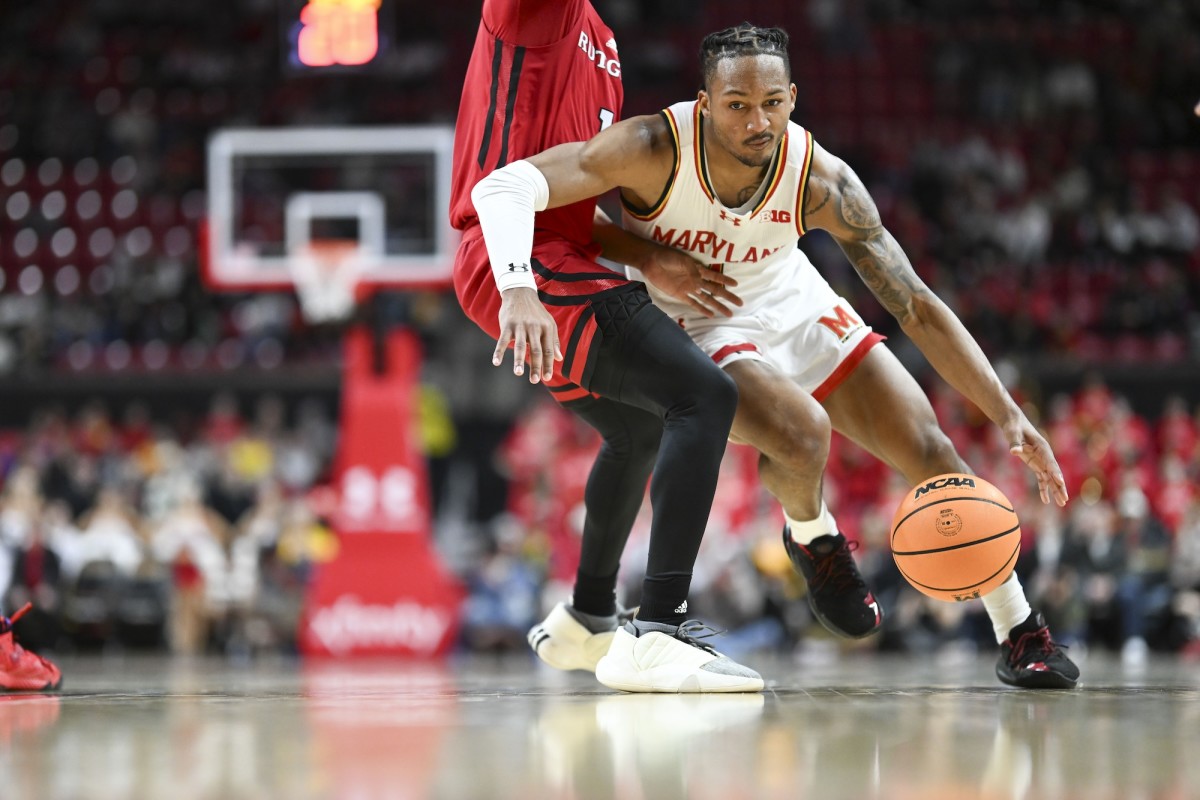
Ohio State Buckeyes (15). Coming off a 16–19 season a year ago, a rebound was expected. But a promising nonconference performance hasn’t carried over to Big Ten play. After starting 11–2, the Buckeyes currently are 14–10 and haven’t won a true road game this season.
They also haven’t won two straight in 2024 and currently are one spot below Maryland in the Big Ten standings. Maybe it helps that the archrival Michigan Wolverines are last—but the Wolverines also beat Ohio State in mid-January in Ann Arbor, so probably not much.
The Buckeyes aren’t guarding much, having surrendered more than 70 points in 12 of 13 Big Ten games. League opponents are making more than 41% of their threes against Ohio State.
The last two times the Buckeyes went consecutive seasons without making the NCAA tournament, coaching changes ensued—Jim O’Brien was out in 2004 and Thad Matta was out in ’17. (O’Brien’s firing was attributed directly to NCAA violations, but the downturn in the program also was pronounced.) Is Chris Holtmann (16) on the clock? He had five straight 20-win seasons before the last two, but he also has a new athletic director in Ross Bjork. We’ll see.
Miami Hurricanes (17). They crashed the Final Four last year with elite offense wallpapering over mediocre defense. This season the defense is about the same and the offensive wallpaper isn’t as pretty. The Canes are 15–9, 6–7 in the ACC and lacking in quality wins.
Life after Isaiah Wong and Jordan Miller—both 2023 NBA draft picks—has been a bit more difficult. There have been more turnovers and fewer free throws. Three-point shooting has taken a downturn in ACC play. Guard Nijel Pack (18), he of the allegedly large NIL contract, has seen his shooting percentages decline across the board from last season.
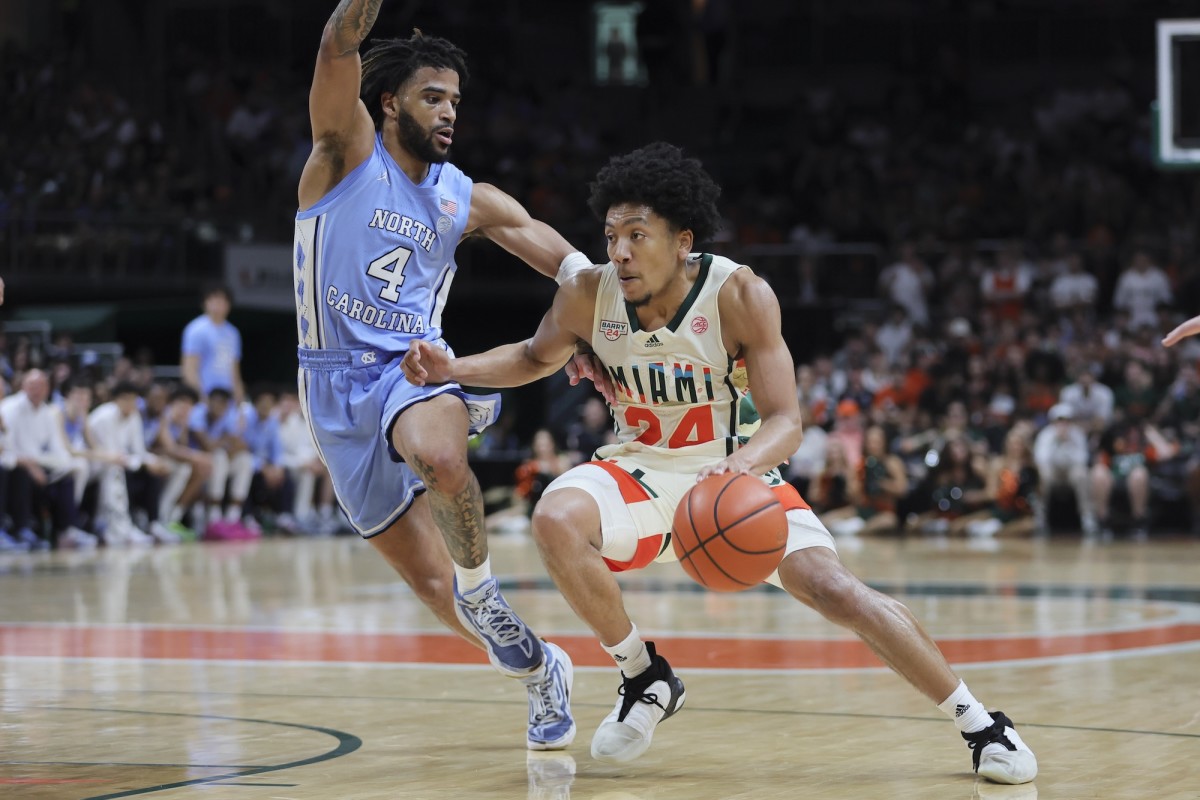
Last year, septuagenarian coach Jim Larrañaga reminded everyone how good he is. This year, he’s reminding us how hard it is to follow up a Final Four run with another great season.
Texas Longhorns (19). A late Miami surge kept the Horns from their first Final Four in 20 years last March, as Texas let a double-digit lead melt away in the final nine minutes. This season has been a tougher encore for Rodney Terry’s team.
The Horns are 16–8, 5–6 in the brutal Big 12, with four tough road games still to play (the Houston Cougars, Kansas Jayhawks, Texas Tech Red Raiders, Baylor Bears). They should make the tournament but cannot afford an extended losing streak down the stretch.
How Big 12 Men’s College Basketball Keeps Getting Stronger
Texas lost several veterans from last season’s team and hasn’t fully replaced them. Adding undersized scoring machine Max Abmas (20) from the Oral Roberts Golden Eagles helped perimeter shooting but probably hurt perimeter defense. Five-star recruit Dillon Mitchell has improved over his freshman year, but hasn’t taken a quantum leap.
Villanova Wildcats (21). They have some great wins—the North Carolina Tar Heels and Texas Tech in the Bahamas, Creighton Bluejays in Omaha—but also were a Big Five train wreck. They were upset by Philly brethren, the Penn Quakers, Drexel Dragons and Saint Joseph’s Hawks. At 13–11 overall and 6–7 in the Big East, welcome to the bubble.
Second-year coach Kyle Neptune had the thankless task of following Jay Wright, and so far the ’Nova faithful are not thanking him for his work—he’s two games over .500 at the school and one game below .500 in league play. Last year ended in the NIT, one season after making the Final Four in Wright’s unexpected final season. That said, Villanova is not the kind of place that makes quick-trigger coaching moves; Neptune will be given every opportunity to grow into a big job.
This season’s team still embraces Wright’s three-centric offensive philosophy but doesn’t make many of them—the Wildcats are seventh nationally in percentage of threes taken but 199th in three-point accuracy.
The perimeter struggle is certainly real for Justin Moore (22), a fifth-year guard who has not regained peak form after a heartbreaking Achilles tear in the 2022 NCAA tournament. Moore is shooting just 24.7% this season from three and has made just two of his last 21.
Other than a trip to UConn on Feb. 24, the schedule offers a chance to build some momentum heading into the Big East tournament. Villanova likely will need it to land in the 68-team bracket.
’Tis the season for massive wins
If your team’s season hasn’t been what you hoped for, fear not. There is still time to rack up quality wins that can change the trajectory. The Minutes looks at five who just scored big wins and five who have a shot at one this week:
Gonzaga Bulldogs (23). The Zags had a total of zero Quad 1 wins heading into Rupp Arena on Saturday and emerged with an overtime victory that at least gets them in the bubble conversation. Their NET rating already had been high (mid-20s) thanks to a 7–4 road/neutral record and no bad losses, but this was a game changer. (It also would help if UCLA, who Gonzaga beat in November, keeps improving its tanked NET rating.) Four of the final six games are on the road, with a Bay Area weekend against the San Francisco Dons and Saint Mary’s Gaels looming large to end the regular season. Those games could define whether the Zags need to win the West Coast Conference tournament to make the Big Dance.
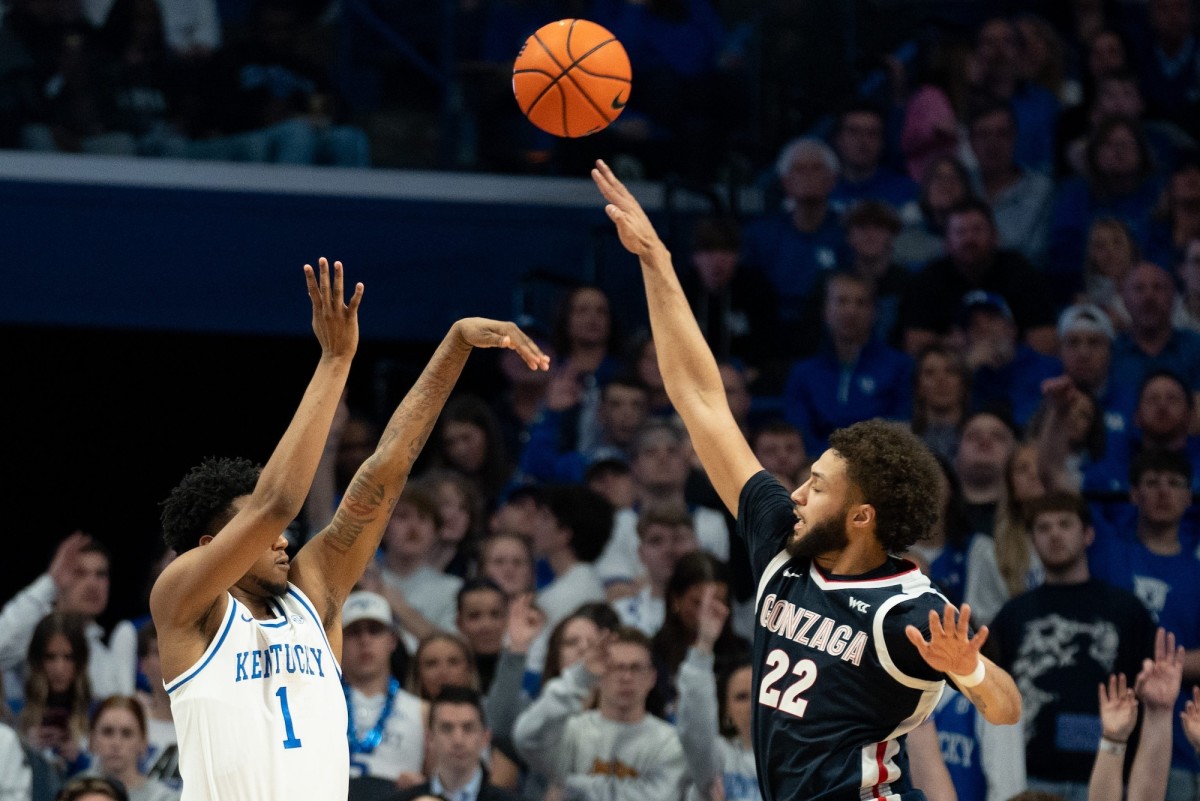
Texas A&M Aggies (24). They blew out Tennessee in College Station, Texas, shooting them up nine spots in the NET and getting them on solid footing on the right side of the bubble at this point. They’ve got three good home wins in SEC play, beating Kentucky and Florida there as well, and a neutral-floor win over Iowa State that continues to age well. Illinois Chicago transfer Jace Carter might be regaining his shooting stroke at just the right time, making 4 of 9 threes in the last two games. For a team that is starved for shooters, that would help immensely.
Florida Gators (25). Their home massacre of the Auburn Tigers on Saturday moved them up seven places in the NET and pairs nicely with a victory in Rupp Arena over Kentucky on Jan. 31. Riley Kugel’s season-high 22 points in 29 minutes off the bench was a welcome contribution in a game the Gators led wire to wire. Florida is now tied for fifth in the SEC at 6–4 after winning five of its last six and could add two more wins this week (the LSU Tigers at home, at the Georgia Bulldogs). A winning conference record certainly is foreseeable heading into the SEC tourney in Nashville.
Michigan State Spartans (26). They have a good NET rating (23rd) and no bad losses. But they do have a lot of them (nine), so it helps to stack some quality wins. Beating the Illinois Fighting Illini on Saturday was one of those, alongside beating the Baylor Bears, Butler Bulldogs and Indiana State Sycamores. It would also help if Tom Izzo’s team steps up on the road, having lost five out of six Big Ten games away from East Lansing, Mich. There will be two of those this week, at the Penn State Nittany Lions and Michigan.
UNLV Runnin’ Rebels (27). Can they force themselves into a crowded at-large herd from the Mountain West? Beating the New Mexico Lobos in Albuquerque for a season sweep is a start, moving the Rebels up 10 spots in the NET. There is some dead weight on the résumé with losses to the Southern Jaguars, Loyola Marymount Lions and Air Force Falcons, but UNLV is on a four-game winning streak and has a lot of opportunity in front of it.
Bubble-ish teams that have a chance to help themselves this week
Cincinnati Bearcats (28). They host the Iowa State Cyclones on Tuesday in a game that takes on added importance after a competitive home loss to Houston on Saturday. Cincy has been agonizingly close many times in its first Big 12 season with a 2–6 league record in games decided by five points or less. At 15–8 overall, 4–6 in the conference, the Bearcats need to get on the right side of a few of those down the stretch to get their first NCAA bid since 2019.
Memphis Tigers (29). A promising season careened onto the brink with a four-game January losing streak, but since then Penny Hardaway’s team has won three straight and now has a big Texas two-step in front of it: at the North Texas Mean Green on Thursday and SMU Mustangs on Sunday. From a bubble perspective, those both might be must-win games. That would also increase the stakes for the two remaining games against Florida Atlantic.
Wake Forest Demon Deacons (30). Wake has won three straight heading into a daunting week on the road, visiting Duke on Monday and the Virginia Cavaliers on Saturday. A split would be good. A sweep would be stupendous and would go a long way toward securing an at-large spot. Nobody said it would be easy: the Demon Deacons haven’t won at Cameron Indoor since 1997 and have lost six of their last seven in Charlottesville, Va.
Ole Miss Rebels (31). They have no terrible losses and wins over bubble brethren Memphis, Florida and the Mississippi State Bulldogs—but all of those were at home. If Ole Miss can join the growing number of teams that beat Kentucky at Rupp Arena (Tuesday), that would be a big résumé boost. The Rebels will have to guard better than normal against a team capable of shooting the lights out from three-point range.
Nevada Wolf Pack (32). Coming off a big week (wins at the Utah State Aggies and at home against the San Diego State Aztecs), here comes another golden opportunity: home against New Mexico on Tuesday and at rival UNLV on Saturday. Win both and an at-large bid is within reach. Split and Nevada is probably still in solid shape. Lose both and palms get sweaty.
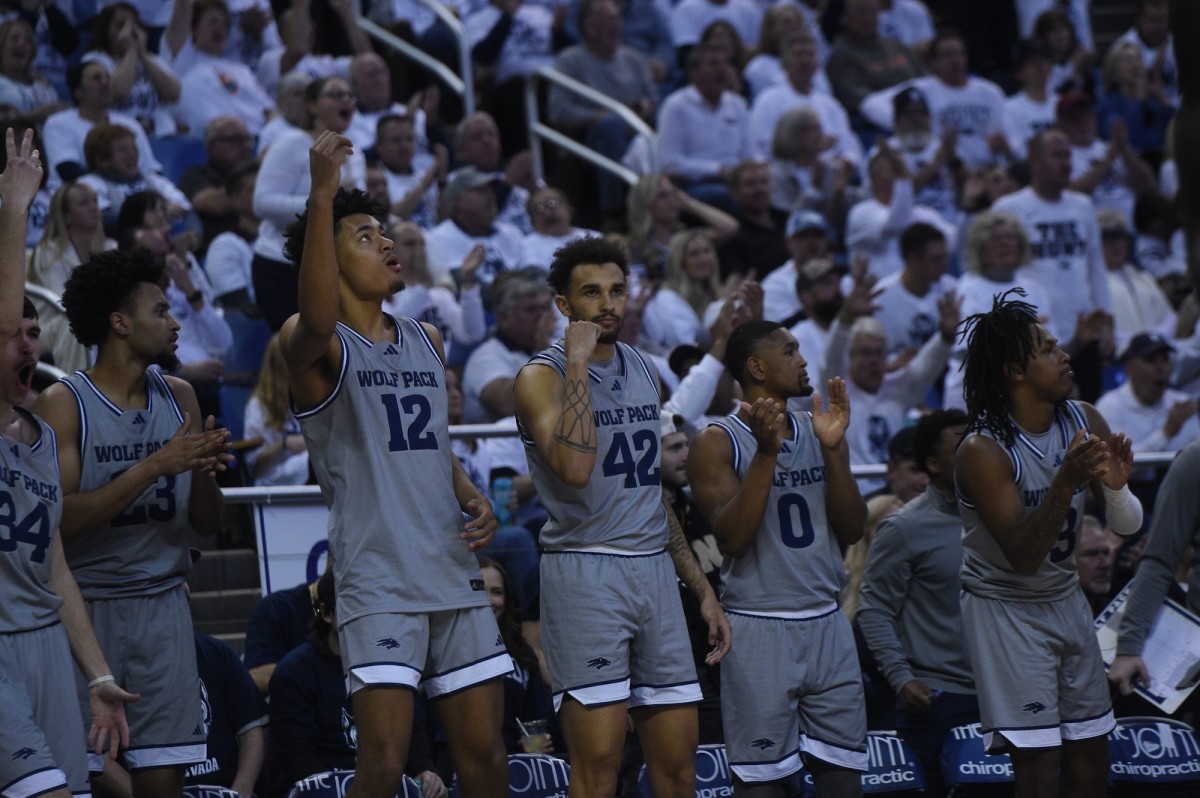
All hail Yale and the Gaels
As noted in last week’s Minutes, pretty much everyone is losing pretty much all the time. But there are two teams that remain undefeated in their conferences, so let’s offer a salute to those stalwart programs on opposite coasts.
Yale Bulldogs (33). They’re 7–0 in the Ivy League, which has charmingly just now reached the midpoint of conference play. The most recent victory bounced the Cornell Big Red (34) from the unbeaten ranks, 80–78, on a Matt Knowling three-point play with 3.2 seconds left. Yale hasn’t lost since before Christmas and tops the Ivy in both offensive and defensive efficiency, according to Ken Pomeroy’s numbers. But the next couple of weeks will be tough with four straight on the road: Penn and the Princeton Tigers this week; Cornell and the Columbia Lions the next.
Saint Mary’s Gaels (35). They’re 11–0 in the WCC, with wins at Gonzaga and San Francisco. In other words, Saint Mary’s really could run the regular-season table and finish 16–0. (The Dons come to Moraga, Calif., on Feb. 20 and the Zags visit March 2.) Losing the BYU Cougars to the Big 12 hurts the league’s overall strength but makes the schedule a bit easier. Randy Bennett’s team is doing it with its customarily slogging pace, ranking 358th nationally in tempo, but as usual it’s working. Guard Aidan Mahaney (36) leads four Saint Mary’s players in double-figure scoring at 14 per game.
Minutes crush of the week
Every week The Minutes will highlight a player who is simply fun to watch. This week: Solomon Washington (37) of Texas A&M.
There might not be anyone who can get up and out of the gym with a sudden burst like Washington, an elite athlete. The 6’ 7” sophomore blocked three shots against Tennessee on Saturday, had three the week before against Florida and three in January against LSU. He’s worked his way into the starting line for the last seven games and seems likely to stay there. And if basketball doesn’t work out, the New Orleans product and high school tight end could get a look on the football field.
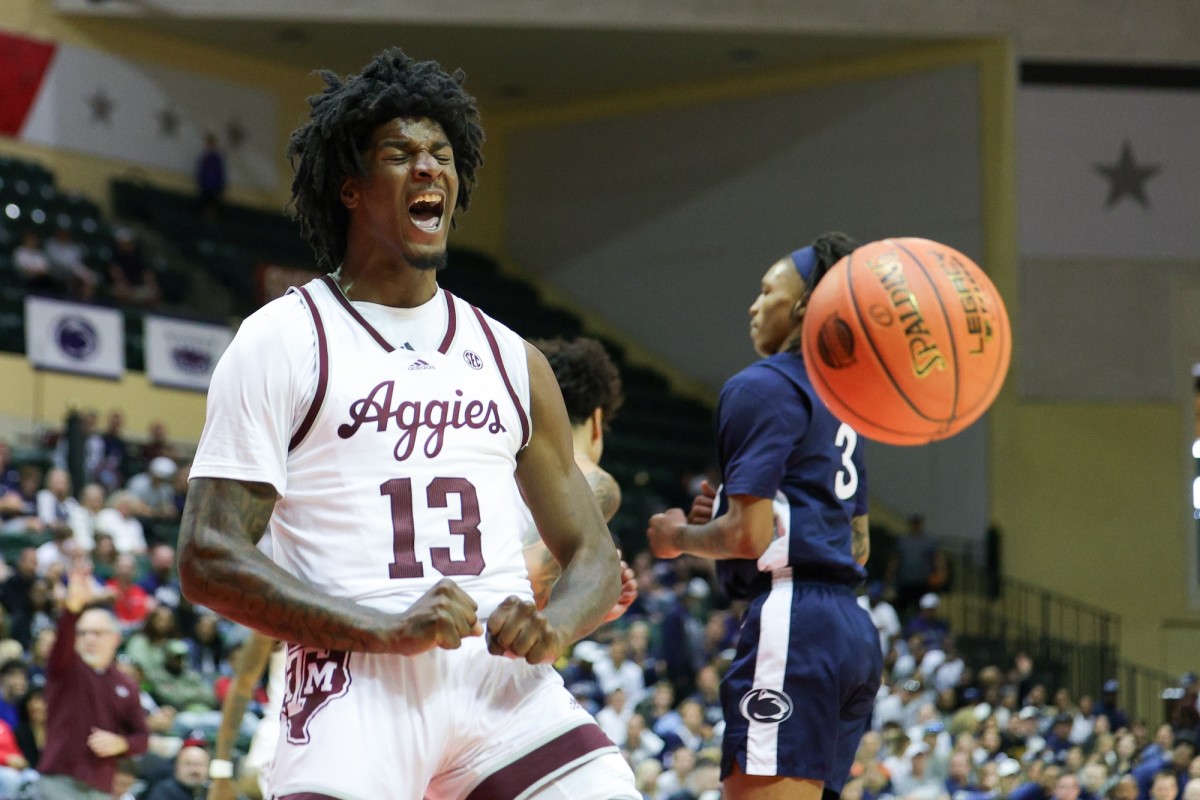
Coach who earned his comp car this week
Lamont Paris (38), South Carolina Gamecocks. He’s gone from 21 wins in his debut season in Columbia, S.C., last season to 21 victories this season—and showing no sign of stopping the win count there. The Gamecocks have won seven straight, shooting out of nowhere and into the SEC title race. Paris’s team is guarding well without fouling, getting key contributions from several new players and playing with a brassy confidence. After Frank Martin took the Gamecocks to the Final Four in 2017, the program fell off the map and hasn’t been back to the tournament since. That’s about to change.
Coach who should ride the bus to work
Greg Gard (39), Wisconsin Badgers. Every year, somebody who has looked good for the first three months of the season falls apart in February. Thus far, the Badgers are that team. They started the season 16–4 and have since lost four straight, bottoming out in a blowout loss at Rutgers over the weekend. This Wisconsin team doesn’t guard as well as previous iterations and now it seems to be having an offensive identity crisis, seemingly forgetting for stretches who should be the go-to options. The back half of February offers some opportunities to get right, at least.
Buzzer beater
When thirsty in the always zesty Aggieville bar area in Manhattan, Kan., The Minutes recommends a stop at O’Malley’s Alley (40). It’s always hopping after a Kansas State game, and never more so than when the Wildcats have just upset Kansas. Steer clear of the Belfast Bombs and go with a Boulevard Tank 7 from Kansas City. Thank The Minutes later.
